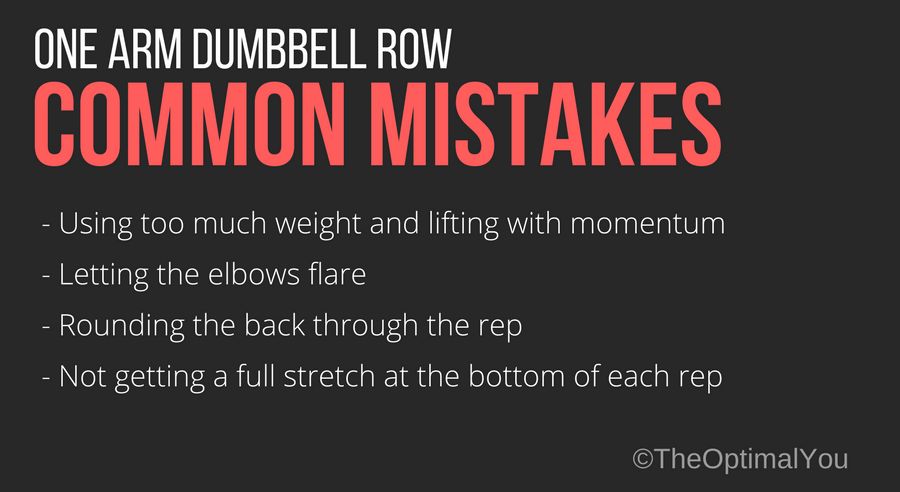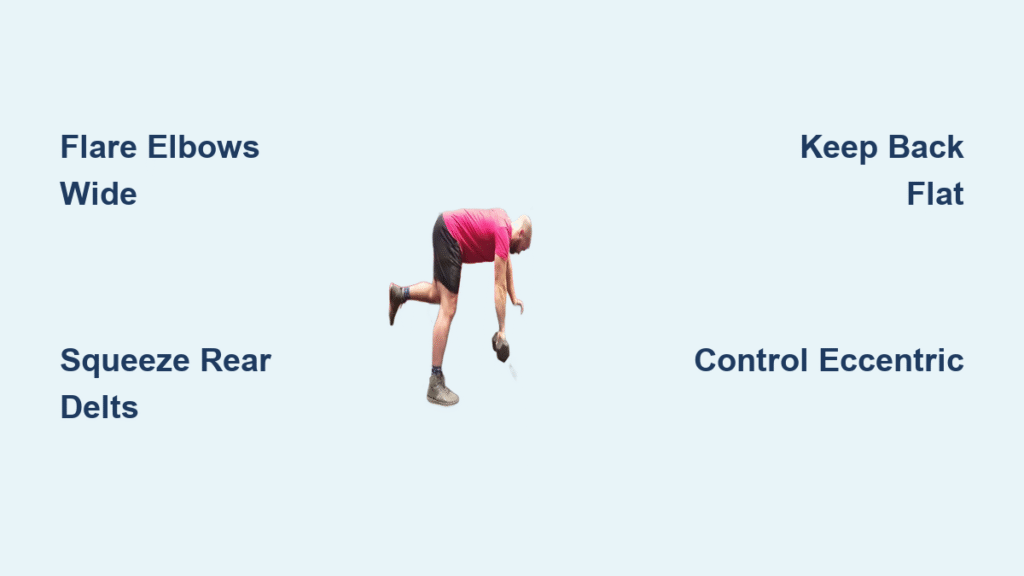That frustrating gap between your shoulder blades that never seems to fill out? The dumbbell elbow-out row delivers targeted rear delt activation that standard rows simply can’t match. While most lifters instinctively pull their elbows back during rows, this strategic variation with flared elbows creates superior muscle recruitment for shoulder symmetry and posture correction. If you’ve been struggling with rounded shoulders or weak upper back development, mastering the dumbbell elbow-out row will transform your physique in just 4-6 weeks of consistent training.
What makes the dumbbell elbow-out row special isn’t just the elbow position—it’s how this subtle adjustment shifts the entire muscle recruitment pattern. Unlike traditional bent-over rows that primarily target lats, this variation creates broader back engagement with special emphasis on the often-neglected rear deltoids. The result? A three-dimensional upper back that improves both athletic performance and everyday posture.
Why Your Rear Delts Need the Dumbbell Elbow-Out Row
Targeted Muscle Activation Breakdown
The dumbbell elbow-out row uniquely activates your shoulders as the primary target, with rear deltoids receiving exceptional stimulation through the wide elbow positioning. Your lats still contribute significantly as secondary muscles during the powerful pulling motion, but the flared elbow position shifts emphasis away from pure lat dominance. This strategic muscle recruitment makes the dumbbell elbow-out row an 17th-ranked shoulder strength exercise with a 94 mSCORE—proving its effectiveness for building shoulder mass.
Enhanced Secondary Muscle Engagement
Your lower back and hamstrings work isometrically to maintain the bent-over position, creating full posterior chain involvement. The magic happens in your upper back though—your rhomboids between the shoulder blades receive enhanced recruitment specifically because of the wide elbow positioning. As you pull through the dumbbell elbow-out row movement, your middle traps actively assist in scapular retraction at the peak contraction, creating that coveted “V-taper” appearance from the rear.
Perfect Your Dumbbell Elbow-Out Row Setup in 3 Steps
Starting Position Essentials
Stand with feet shoulder-width apart holding dumbbells at your sides, positioned next to your hips with palms facing your legs in a neutral grip. Maintain a neutral spine throughout setup—this means imagining a straight line from your head to your tailbone without excessive arching or rounding. Your core should be braced but not rigid, ready to stabilize your torso during the movement.
Mastering the Hip Hinge
Push your hips backward while maintaining slightly bent knees, lowering your torso to either a 45-degree angle (beginner-friendly) or parallel to the floor (advanced variation). The correct angle depends entirely on your hamstring flexibility and lower back strength—don’t force parallel positioning if it compromises your spinal alignment. Keep your chest proud and shoulders pulled back to protect your spine throughout the movement.
Arm Positioning for Maximum Effect
Extend your arms fully so dumbbells hang directly beneath your shoulders. This starting position ensures proper mechanical advantage for the rowing motion. Your elbows should naturally point out to your sides at approximately 90 degrees from your torso—this is the “elbow-out” position that defines the exercise and creates superior rear delt activation compared to traditional rows.
Execute the Flared-Elbow Rowing Motion Correctly
Wide Elbow Pulling Technique
Pull your elbows up and wide while maintaining that crucial 90-degree angle from your torso. Your elbows should travel outward and upward, not straight backward like in standard rows. This specific movement path is what transforms the exercise from a lat-dominant movement to a rear delt powerhouse. Think of trying to touch your elbows to the ceiling rather than pulling toward your hips.
Peak Contraction Focus for Muscle Growth
Elevate your elbows until they’re almost aligned with shoulder level, creating an intense squeeze in your rear deltoids. Actively squeeze your shoulder blades together at the top position, holding this contraction for 1-2 seconds. This scapular retraction maximizes rhomboid and middle trap activation—the key to developing that thick upper back that makes shoulders appear wider.
Controlled Eccentric Phase for Hypertrophy
Lower the dumbbells slowly back to the starting position under control—this eccentric phase builds significant muscle damage for growth. Resist gravity’s pull by taking 2-3 seconds to lower the weights. Reset your scapulae between reps to ensure fresh muscle recruitment each time, which prevents momentum from taking over and keeps tension on your rear delts.
Fix These 3 Common Dumbbell Elbow-Out Row Mistakes Immediately

Elbow Position Errors That Kill Rear Delt Activation
Pulling elbows too far back turns your dumbbell elbow-out row into a standard row, dramatically reducing rear delt engagement. Keep your elbows flared wide throughout the movement—this is non-negotiable for proper form. If you find yourself defaulting to traditional rowing mechanics, reduce your weight by 20-30% and focus solely on the elbow path.
Posture Breakdowns That Risk Injury
Rounding your lower back during the hip hinge is the fastest route to spinal strain with the dumbbell elbow-out row. If your lower back rounds, either raise your torso angle closer to 45 degrees or reduce the weight. Your chest must stay proud with shoulders pulled back to maintain proper spinal alignment—this isn’t optional for safe execution.
Range of Motion Mistakes That Limit Results
Pulling too high shifts tension to your upper traps instead of your rear delts—elbows should stop just below shoulder level. Similarly, partial reps at the bottom eliminate the complete muscle stretch necessary for optimal growth. Let your arms fully extend at the bottom position while maintaining tension in your rear delts—don’t allow the dumbbells to rest momentarily.
Program Your Dumbbell Elbow-Out Rows for Maximum Results

Beginner to Advanced Progression Plan
Start with 3 sets of 8-12 reps using lighter weights than you’d use for standard rows—the wide elbow position reduces mechanical advantage significantly. Rest 60-90 seconds between sets to maintain intensity without compromising form. As you advance, incorporate drop sets by performing 8-10 reps to failure, then immediately reducing weight by 20-25% for another 8-10 reps.
Strategic Workout Integration
Place dumbbell elbow-out rows after heavy pressing movements but before isolation exercises like lateral raises. This positioning maximizes rear delt activation when your shoulders are fresh. For push-pull splits, include them on pull day alongside other rowing variations. The exercise ranks #8 in Best Beginner Shoulders Workouts With Dumbbells, making it essential for balanced shoulder development.
Troubleshoot Poor Muscle Activation Instantly

No Rear Delt Burn? Fix These Issues
If you’re not feeling the rear delt burn during your dumbbell elbow-out row, lower your torso angle closer to parallel and reduce the weight by 20-30%. Focus on pulling with your elbows, not your hands—imagine trying to touch your elbows to the ceiling. Many lifters unknowingly recruit traps instead of rear delts; correcting this mental cue dramatically improves muscle activation.
Lower Back Discomfort Solutions
Shorten your range of motion slightly—don’t let your torso drop as low if it strains your lower back. Consider switching to single-arm dumbbell elbow-out rows to reduce spinal load while maintaining rear delt activation. Your hamstrings working isometrically should support the position, not create discomfort—if you feel lower back strain, reevaluate your hip hinge mechanics immediately.
Why This Underrated Exercise Belongs in Your Routine
Mastering the dumbbell elbow-out row transforms neglected rear delts into defined, strong muscles that enhance both aesthetics and shoulder health. With a 94.7 mSCORE, dumbbell rear delt raises serve as an excellent alternative when elbow positioning causes discomfort, but nothing replicates the compound strength benefits of the properly executed dumbbell elbow-out row. Start light, perfect the wide elbow positioning, and progressively overload this movement for 4-6 weeks—you’ll notice improved posture, enhanced shoulder stability, and a noticeably thicker upper back that standard rows never delivered. Your journey to balanced shoulder development begins with this single strategic adjustment to your rowing technique.




